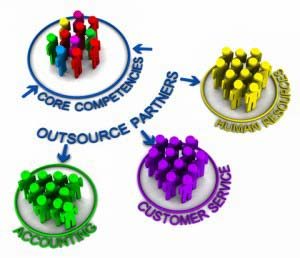by virtualworks | Jan 26, 2025 | business growth, daily lfe, Leadership, life work balance, Mastery, Outsourcing, Productivity, ROWE, Time Management, working from home, working remotely
 As non-profit organizations navigate an ever-evolving work landscape, the Results-Only Work Environment (ROWE) has emerged as a game-changing approach to boost productivity, enhance work-life balance, and cultivate trust in the workplace. In this blog post, we will explore the core principles of ROWE, its key differences from traditional work environments, and the numerous benefits it offers to both employees and employers.
As non-profit organizations navigate an ever-evolving work landscape, the Results-Only Work Environment (ROWE) has emerged as a game-changing approach to boost productivity, enhance work-life balance, and cultivate trust in the workplace. In this blog post, we will explore the core principles of ROWE, its key differences from traditional work environments, and the numerous benefits it offers to both employees and employers.
Defining ROWE and Its Core Principles
ROWE is a management strategy that prioritizes results over the traditional emphasis on the number of hours worked or physical presence in the office. Built on three fundamental principles, ROWE redefines the modern workplace:
- Evaluation Based on Performance: Employees are assessed based on their ability to achieve goals and produce results, rather than the time they spend at their desks.
- Flexible Work Schedules and Locations: ROWE empowers employees to work when and where they are most productive, promoting autonomy and self-management.
- Trust as the Foundation: A trust-based work environment encourages open communication, collaboration, and mutual accountability among team members.
Contrasting ROWE with Traditional Work Environments
ROWE presents a stark contrast to conventional work models by shifting the focus from time spent in the office to the achievement of results. Key differences include:
- Flexibility and Autonomy: Unlike traditional work environments, ROWE embraces flexible work hours and locations, empowering employees to tailor their work schedules to their unique needs and preferences.
- Trust and Collaboration: In ROWE, trust is the cornerstone of the work environment, fostering open dialogue, mutual support, and a sense of shared purpose among team members.
- Promoting Work-Life Balance: By allowing employees to integrate their personal and professional commitments, ROWE enables them to maintain a healthy work-life balance, reducing stress and enhancing job satisfaction.
The Benefits of Implementing ROWE for Employees and Employers
Adopting a Results-Only Work Environment can yield a wide range of advantages for both employees and employers:
- Enhanced Productivity: By enabling employees to work during their peak performance hours, ROWE can significantly increase productivity and efficiency.
- Improved Work-Life Balance: ROWE’s flexible work arrangements allow employees to manage their personal commitments, resulting in reduced stress, higher job satisfaction, and increased loyalty to the organization.
- Strengthened Trust and Communication: A trust-based work environment nurtures open communication, collaboration, and mutual support, leading to more cohesive teams and better decision-making.
- Reduced Turnover Rates and Increased Employee Engagement: By offering employees greater autonomy and flexibility, ROWE can lead to higher engagement, motivation, and loyalty, reducing turnover rates and associated costs.
- Cost Savings and Operational Efficiency: ROWE can help organizations save on overhead expenses, as well as optimize work processes by leveraging technology and fostering a results-driven culture.
Successfully Implementing ROWE: Key Strategies
To ensure a smooth transition to ROWE, non-profits can follow these key strategies:
- Provide Comprehensive Training: Equip employees with the skills and knowledge needed to excel in a ROWE environment, focusing on goal setting, time management, and effective communication.
- Set Clear Expectations and Guidelines: Establish and communicate performance expectations, work guidelines, and company policies to ensure everyone understands their roles and responsibilities within the new work model.
- Foster a Trust-Based Culture: Encourage transparency and open communication to build trust and collaboration among team members and management.
As non-profits continue to navigate an increasingly competitive and rapidly changing work landscape, ROWE presents a compelling opportunity to redefine the modern workplace. By prioritizing results, embracing flexibility, and nurturing trust, organizations can create an environment where employees thrive, and missions are achieved more effectively. Embrace the ROWE revolution and unlock your non-profit’s full potential.
by virtualworks | Dec 2, 2024 | business growth, Case Study, daily lfe, life work balance, Mastery, Outsourcing, Productivity, remote meetings, Remote Office Management, ROWE, Time Management, working from home, working remotely
 As the modern workplace continues to evolve, non-profit organizations increasingly recognize the Results-Only Work Environment (ROWE) as a powerful strategy for fostering flexibility, innovation, and employee satisfaction. While transitioning to ROWE offers numerous benefits, it also presents unique challenges that must be navigated with care. In this blog post, we will explore potential hurdles non-profits may face when implementing ROWE and discuss strategies to overcome them, empowering your organization to thrive in the face of change.
As the modern workplace continues to evolve, non-profit organizations increasingly recognize the Results-Only Work Environment (ROWE) as a powerful strategy for fostering flexibility, innovation, and employee satisfaction. While transitioning to ROWE offers numerous benefits, it also presents unique challenges that must be navigated with care. In this blog post, we will explore potential hurdles non-profits may face when implementing ROWE and discuss strategies to overcome them, empowering your organization to thrive in the face of change.
Adapting to a New Management Style
The shift to ROWE requires a significant change in mindset and practices for managers and employees alike. To ease the adaptation process:
- Offer Comprehensive Training: Equip your staff with the skills and knowledge needed to excel in a ROWE environment through workshops and training sessions. Focus on essential areas such as goal-setting, time management, and effective communication.
- Clearly Define Expectations: Establish and communicate performance expectations, work guidelines, and company policies to ensure everyone understands their roles and responsibilities within the new work model.
- Cultivate a Trust-Based Culture: Encourage transparency and open communication between team members and management to build trust and collaboration.
Addressing Communication and Collaboration Hurdles
With employees working different hours or across various time zones, communication and collaboration challenges may arise. To tackle these issues:
- Leverage Technology: Utilize collaboration platforms and communication tools that facilitate real-time connection and keep everyone in the loop, regardless of location or schedule.
- Implement Standardized Communication Protocols: Establish guidelines for communication, such as expected response times, preferred channels, and expectations for virtual meetings, to ensure efficient interaction among team members.
- Promote Regular Check-ins and Team Building: Schedule routine team meetings, one-on-one check-ins, and virtual social events to maintain a sense of camaraderie and address any challenges promptly.
Mitigating Risks Associated with Reduced Supervision
With ROWE’s focus on autonomy and trust, it’s crucial to identify and mitigate potential risks related to reduced supervision:
- Monitor Performance Regularly: Assess individual and team performance on a regular basis, providing constructive feedback, and ensuring that goals are being met.
- Encourage Accountability and Ownership: Motivate employees to take responsibility for their work, honor deadlines, and communicate any challenges or concerns they may encounter.
- Provide a Robust Support System: Offer resources, mentorship programs, and training opportunities to help employees grow and excel in their roles.
A Journey of Growth and Resilience
While implementing ROWE may present challenges for non-profits, it’s essential to view these obstacles as opportunities for growth and resilience. By understanding and addressing the issues head-on, organizations can create a thriving work culture that fosters innovation and success. Embrace the journey towards ROWE, and your non-profit will be well-positioned to navigate the ever-evolving world of work.
A Case Study: Non-Profit Success in a ROWE Environment
To illustrate the power of ROWE for non-profits, let’s consider the example of XYZ Organization, a non-profit focused on environmental conservation. By embracing ROWE, XYZ Organization experienced increased productivity, reduced turnover rates, and higher employee satisfaction levels.
XYZ Organization’s success can be attributed to their comprehensive training programs, effective communication protocols, and strong support systems. By implementing these strategies, they overcame challenges associated with ROWE and transformed their work culture, ultimately enhancing their impact and achieving their mission more effectively.
As the work landscape continues to evolve, embracing ROWE offers non-profits an opportunity to adapt and thrive. By addressing the challenges associated with this innovative management style and implementing strategies to overcome them, your organization can build a resilient and successful future.
by virtualworks | May 20, 2024 | Business, business growth, Customer relationships, Leadership, Mastery, Outsourcing, Productivity, Remote Office Management, Team Work, Virtual Assistant, working from home
 I have a friend who worked as a Barista at a well-known coffee shop. She tells the stories of guests who would return their latte because “it just isn’t right”. After making thousands of lattes she understood that what is ‘right’ to the recipe isn’t always ‘right’ to the customer. She learned to ask probing questions such as “is it too sweet? Too milky? Too much coffee?” By requiring the guest to be more specific, she was able to fix the problem quickly. In short, she learned to speak the language of guests’ expectations.
I have a friend who worked as a Barista at a well-known coffee shop. She tells the stories of guests who would return their latte because “it just isn’t right”. After making thousands of lattes she understood that what is ‘right’ to the recipe isn’t always ‘right’ to the customer. She learned to ask probing questions such as “is it too sweet? Too milky? Too much coffee?” By requiring the guest to be more specific, she was able to fix the problem quickly. In short, she learned to speak the language of guests’ expectations.
Hiring a remote support professional can be a little like that, except you’re the guest whose latte isn’t quite ‘right’.
When you hire someone to do a job you have a number of expectations about how the job ought to be done. It can take time to learn how to talk about the tasks you need accomplished. It can be difficult to accurately define the quality, feel or essence of a job that needs doing. You might think it is simple, yet you understand all the reasons you do it THIS way, and perhaps even all the reasons you DON’T do it another way. Your ‘right’ isn’t the same as everyone else’s. Often this skill is learned through trial and error.
To start learning this skill you just have to begin. One options might be to choose a small one-off task that can be outsourced with limited risk to your organization. It could be a mailer that needs to be written, or a spreadsheet that needs cleaning up. Just a couple of hours’ worth of work. Find a resource who can do the project for you and see how it goes. If they do a good job, you have a great product and good return on your investment. If they don’t meet your expectations, ask yourself how you could have communicated better.
Then try it again.
In this way you learn to speak the language of your expectations and your business in such a way so your resource can grasp what you need and want and meet those expectations the first time!
Check out our Nine Guidelines to Outsourcing to help you find your remote support groove.
by virtualworks | Apr 14, 2024 | Accomplishments, daily lfe, Mastery, Productivity, Time Management
 Who doesn’t have a ‘bad’ day?
Who doesn’t have a ‘bad’ day?
We all do sometimes, and these days it seems like there are a lot of them. A recent bad day was experienced by a friend of mine, let’s call her “R”. Picture this:
After a restless night’s sleep, “R” wakes up with an incredible headache and stumbles along getting ready for the workday ahead. With no hot water left for a shower, a broken hairbrush and tangled necklace (and not one, but two, dropped cups of coffee), she managed to still get herself ready for the day. She realizes what she thought was 8 am, was actually 9 am and she was already running late for work. The rest of the day became a blur of things just not going right. It is safe to say “R” was having a ‘bad’ day.
There are some common causes for a bad day: The list below is not exhaustive of the causes of a bad day, but they are common to many.
- Lack of Sleep (like our friend above): not getting the right amount of sleep can be a contributor to stress and poor health.
- The Presentation of Negative Information: we are bombarded by the news, social media and negative people providing negative information that can be overwhelming.
- On-going issues that last a while: there may be past negative experiences that still have a current impact that needs to be dealt with.
- Upsetting events just happen: things just happen and they will have an effect on your day.
Relativity of Problems:
It’s important to recognize that people come from different places and their lives are based on different events they experience. As a result, we all have different levels of what people consider a problem that causes a bad day and it is important to not discount the struggles of others even if we don’t understand their struggles as a problem.
Tips to get through it: So, let’s try to get through that bad day with the following ideas:
- Take a moment to just breathe. Stop the bad day in its tracks.
- Do some things to make you feel better like taking a relaxing bath, have some tea, go for a walk or meditate.
- Understand the cause of the bad day and determine if these are things within your control. If they are, make the change that is needed and if this is not in your control do your best to let it go.
- Journal those things that are causing your bad day as a way to express your emotions or speak with someone to ask for help.
If you’re interested in trying a few other methods to get through a bad day, check out tinybuddha.com’s article on how to turn around a bad day in 10 minutes.
by virtualworks | May 22, 2023 | Business, business growth, Leadership, Mastery, Productivity, Time Management, Uncategorized, working from home, working remotely
 Outsourcing of services is becoming more and more mainstream and with the abundance of former corporate workers who have vast knowledge and experience and now run their own businesses, you will likely be able to find someone to help you for a reasonable amount of money. Just as business owners can operate from just about anywhere, resources can provide services from anywhere. But whatever your needs are, always remember: “buyer beware”!!
Outsourcing of services is becoming more and more mainstream and with the abundance of former corporate workers who have vast knowledge and experience and now run their own businesses, you will likely be able to find someone to help you for a reasonable amount of money. Just as business owners can operate from just about anywhere, resources can provide services from anywhere. But whatever your needs are, always remember: “buyer beware”!!
Here’s a few things to consider when outsourcing:
- The lowest priced outsourced solution may not be the best; good people cost money and beware that even these days, you still get what you pay for.
- If you’re just starting out, outsource from the very beginning with a Virtual Assistant and a bookkeeper and grow your team from there. As your business grows, you can take on a web designer, a ghost writer, a graphic designer, an executive assistant, a project manager, etc.
- Don’t outsource a task just because you don’t want to do it. There will be tasks that only you can do because they’re important to operations and strategic plan.
- Always strike a fair deal with your resources and treat them with respect. You’re relying on them to handle important tasks for you and your business so don’t take advantage of them.
- Bartering. This is a great way to get things done for no cost in exchange for services. Make sure that you and the resource are clear about the terms and that the services you each provide are both what you want. Beware that this mode of payment isn’t for everyone.
On the personal side of your life, you might think about outsourcing to further free up your time:
- A personal assistant to help keep you and your family organized;
- Housekeeper/house cleaning service;
- Property maintenance;
- Grocery service, errand service
When I first started my remote support agency, I thought I would lay-off my housekeeper, thinking that since I would be working from home, I could manage the house myself. A very wise business coach I met during my early networking days advised me against it. The reason? “You’re going to be at work during the day.” She was correct, of course, and my housekeeper is still with me to this day. What are your priorities? What would make your life easier and be less stressful for you? Give it some thought!
 As non-profit organizations navigate an ever-evolving work landscape, the Results-Only Work Environment (ROWE) has emerged as a game-changing approach to boost productivity, enhance work-life balance, and cultivate trust in the workplace. In this blog post, we will explore the core principles of ROWE, its key differences from traditional work environments, and the numerous benefits it offers to both employees and employers.
As non-profit organizations navigate an ever-evolving work landscape, the Results-Only Work Environment (ROWE) has emerged as a game-changing approach to boost productivity, enhance work-life balance, and cultivate trust in the workplace. In this blog post, we will explore the core principles of ROWE, its key differences from traditional work environments, and the numerous benefits it offers to both employees and employers.




Recent Comments